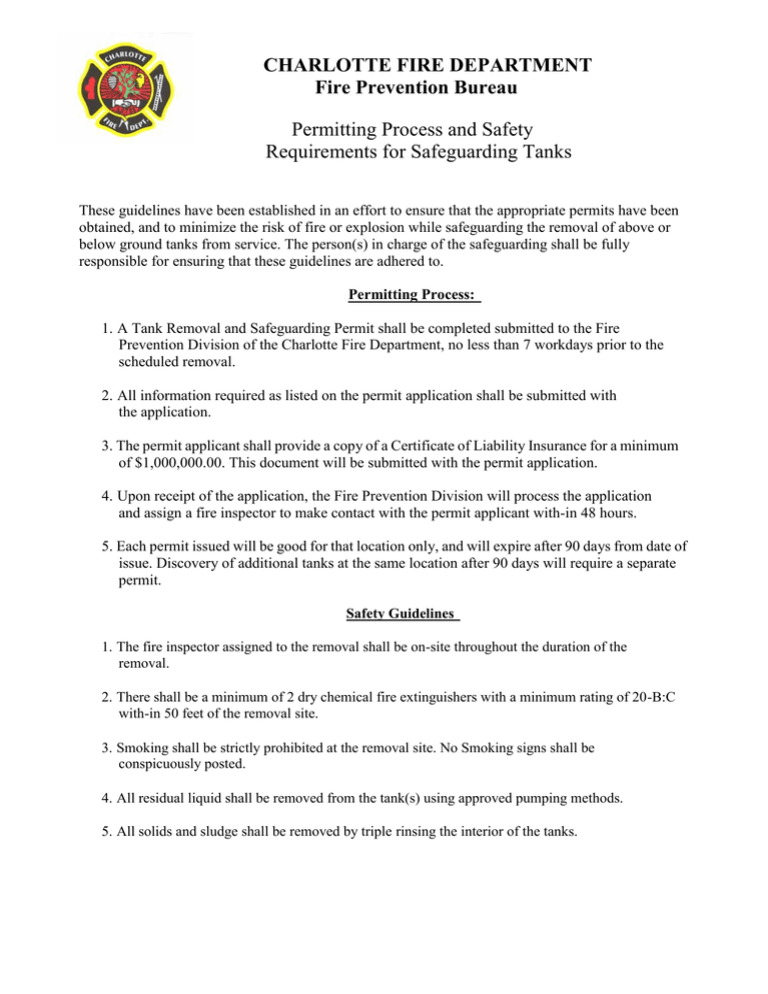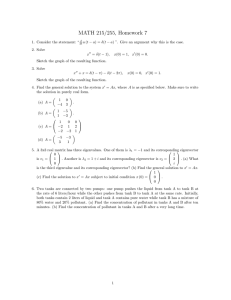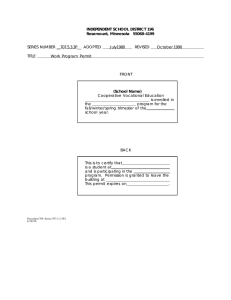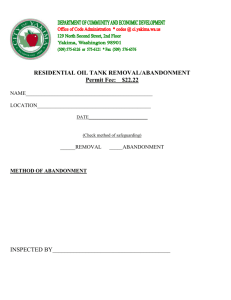Permitting Process and Safety Requirements for Safeguarding Tanks CHARLOTTE FIRE DEPARTMENT
advertisement

CHARLOTTE FIRE DEPARTMENT Fire Prevention Bureau Permitting Process and Safety Requirements for Safeguarding Tanks These guidelines have been established in an effort to ensure that the appropriate permits have been obtained, and to minimize the risk of fire or explosion while safeguarding the removal of above or below ground tanks from service. The person(s) in charge of the safeguarding shall be fully responsible for ensuring that these guidelines are adhered to. Permitting Process: 1. A Tank Removal and Safeguarding Permit shall be completed submitted to the Fire Prevention Division of the Charlotte Fire Department, no less than 7 workdays prior to the scheduled removal. 2. All information required as listed on the permit application shall be submitted with the application. 3. The permit applicant shall provide a copy of a Certificate of Liability Insurance for a minimum of $1,000,000.00. This document will be submitted with the permit application. 4. Upon receipt of the application, the Fire Prevention Division will process the application and assign a fire inspector to make contact with the permit applicant with-in 48 hours. 5. Each permit issued will be good for that location only, and will expire after 90 days from date of issue. Discovery of additional tanks at the same location after 90 days will require a separate permit. Safety Guidelines 1. The fire inspector assigned to the removal shall be on-site throughout the duration of the removal. 2. There shall be a minimum of 2 dry chemical fire extinguishers with a minimum rating of 20-B:C with-in 50 feet of the removal site. 3. Smoking shall be strictly prohibited at the removal site. No Smoking signs shall be conspicuously posted. 4. All residual liquid shall be removed from the tank(s) using approved pumping methods. 5. All solids and sludge shall be removed by triple rinsing the interior of the tanks. 6. Tank(s) shall be properly and adequately purged of all vapors to reach a level of 10% or less of the product’s LEL. Purging shall be accomplished by approved industry standards. 7. If tanks are remaining in place, tanks shall be filled with sand or gravel, or other approved inert material. 8. All tank openings shall be capped or plugged, leaving a 0.125-inch to 0.25-inch diameter opening, to allow for pressure equalization. 9. Tank(s) shall be lifted and removed by utilizing the lifting lugs, or by threaded caps with preengineered lifting lugs. 10. The on-site cutting of tanks shall be STRICTLY PROHIBITED.



